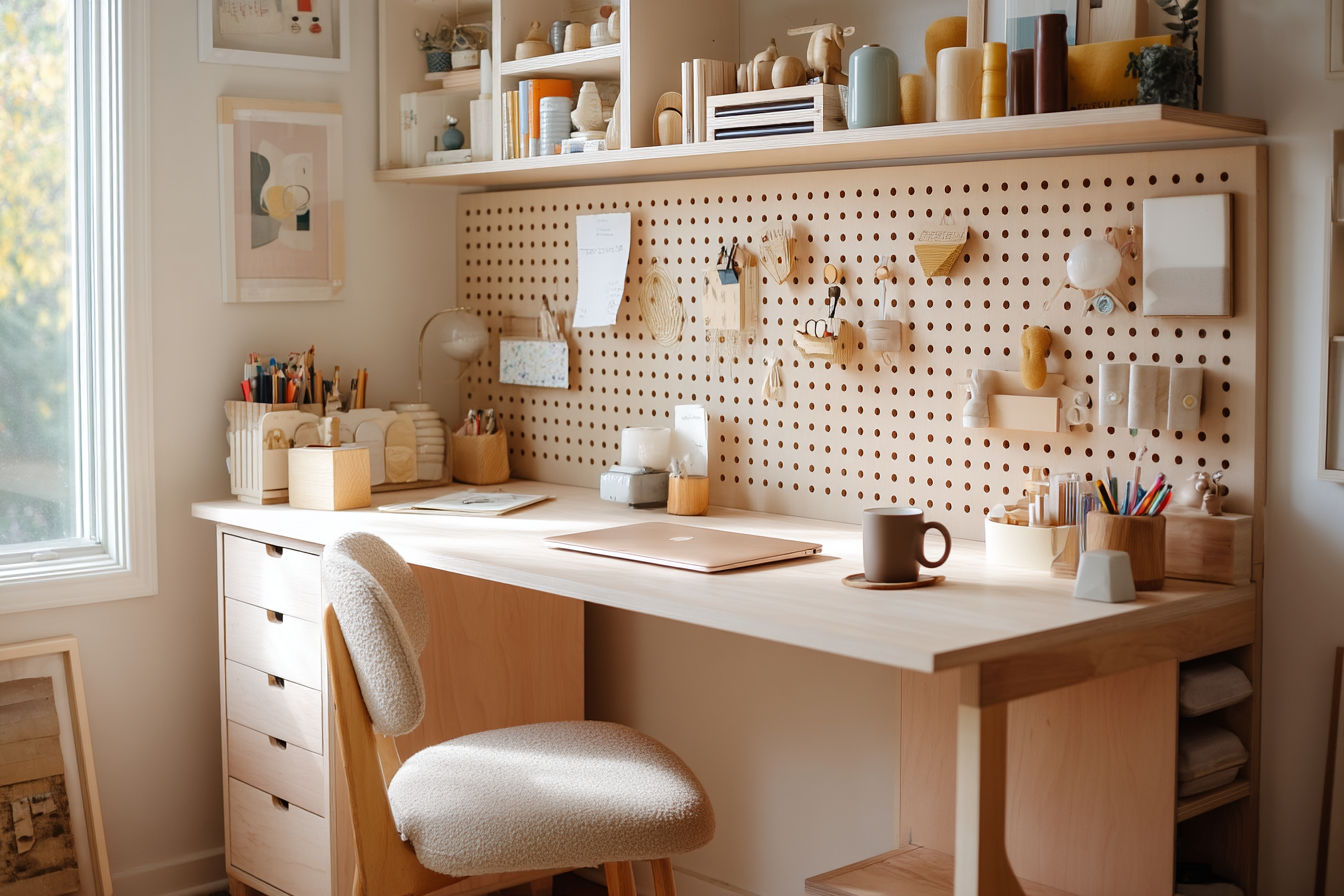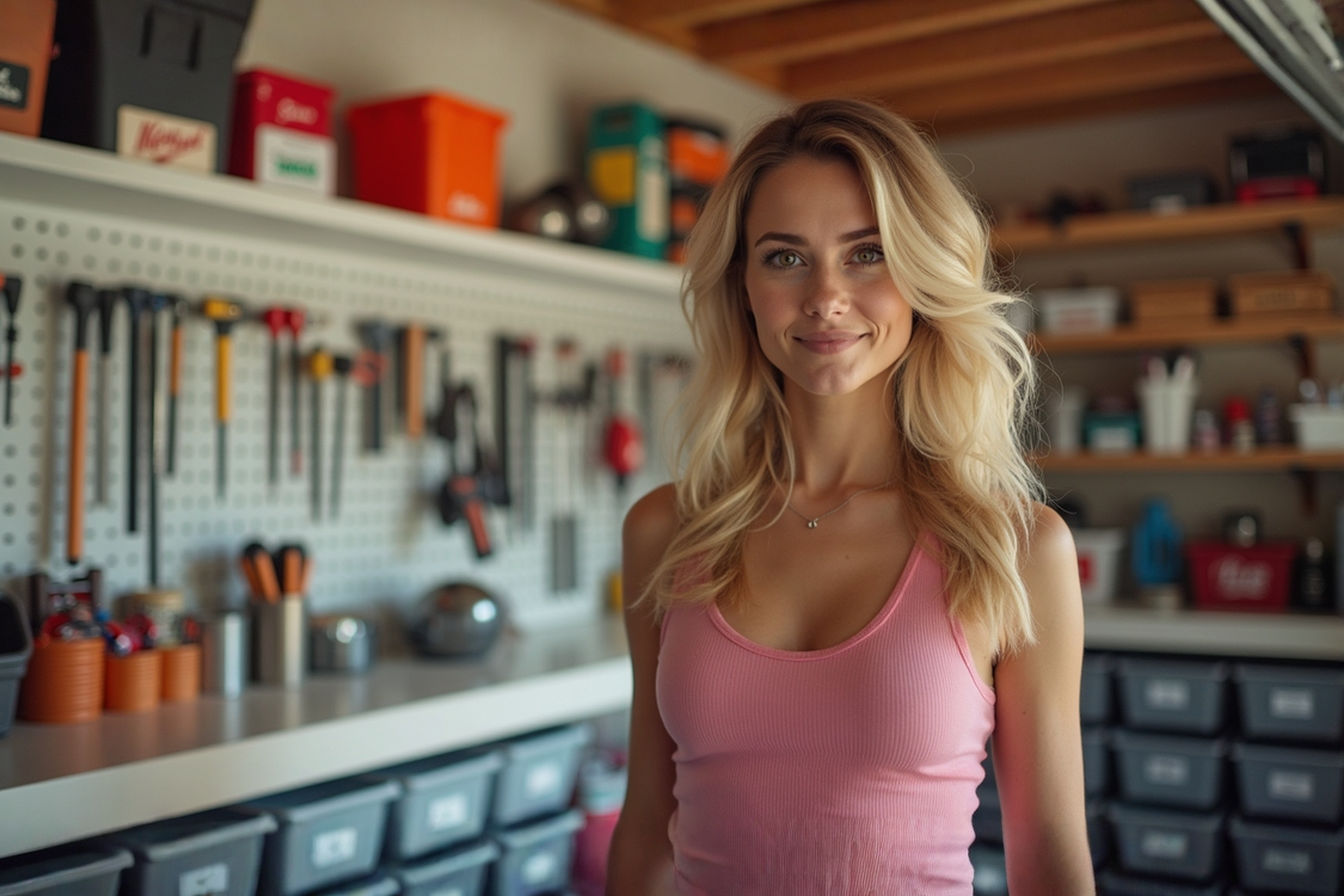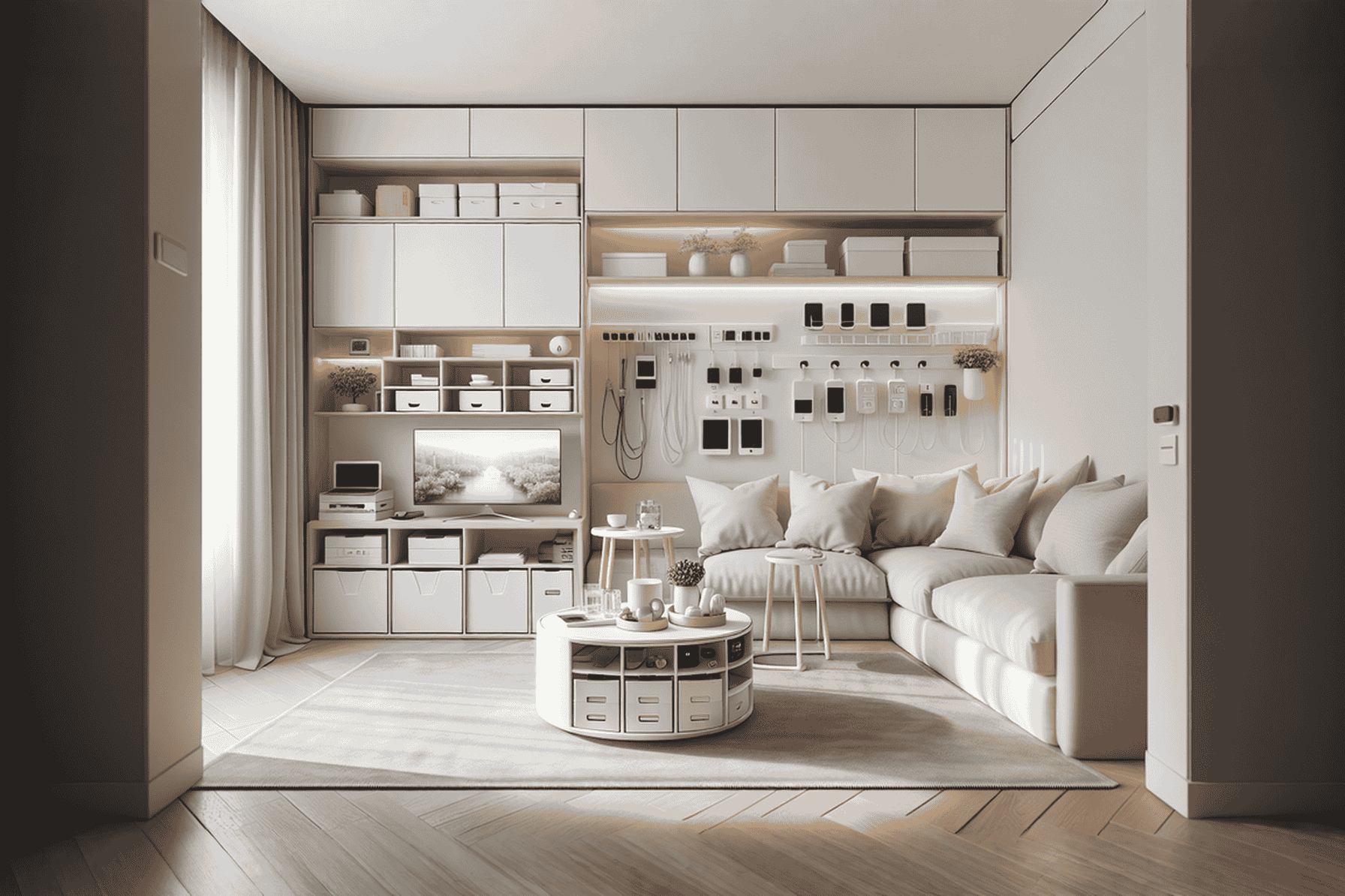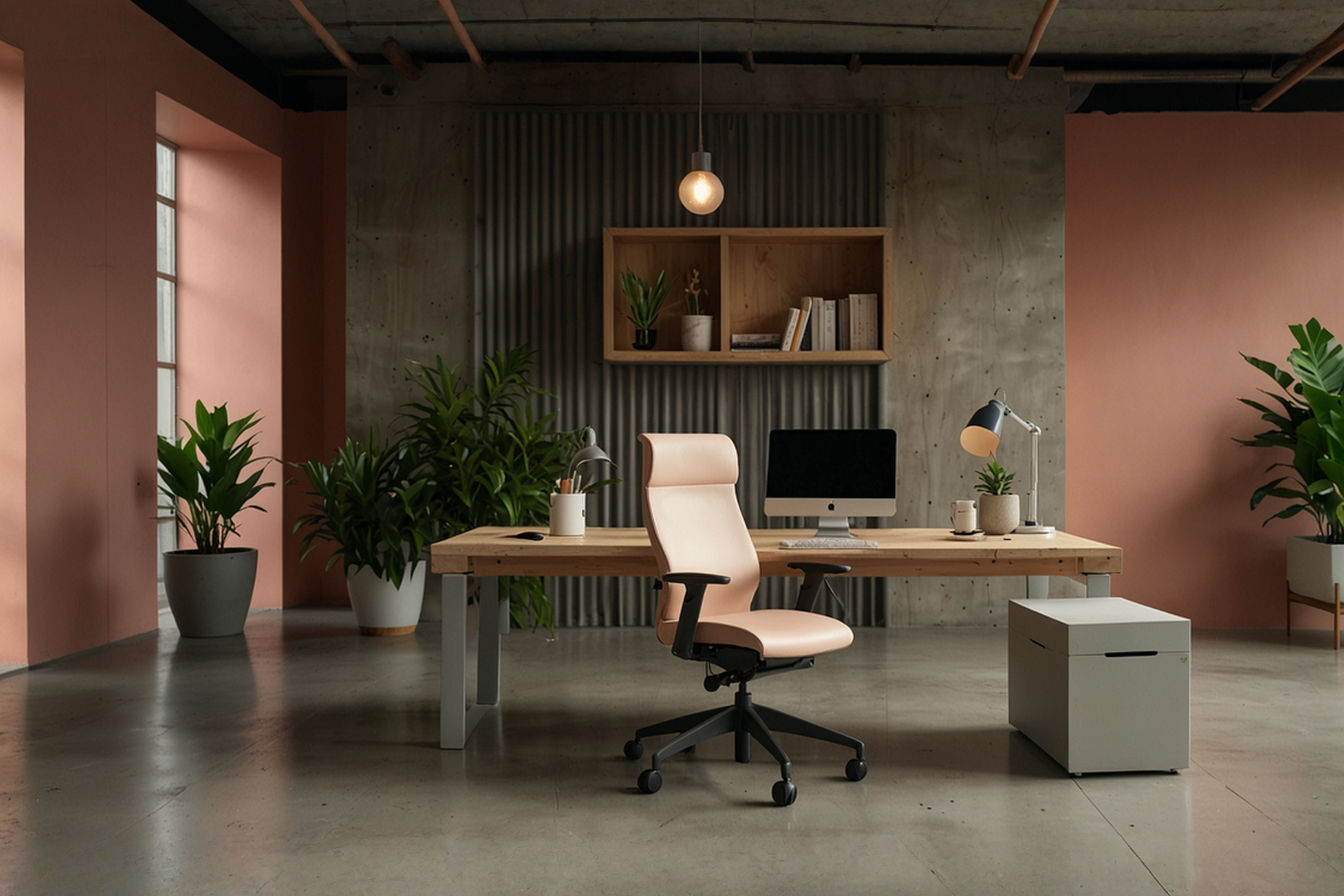This post may contain affiliate links. If you make a purchase through these links, we may earn a commission at no additional cost to you.
Dealing with a small bathroom often feels like solving a complex puzzle. Every inch matters, and balancing functionality with style can challenge even the most creative homeowners. Yet, a compact bathroom doesn’t mean you must sacrifice comfort or break the bank to make it work.
Smart design choices can transform your tiny bathroom from a cramped afterthought into an efficient, stylish space that feels larger than its square footage suggests. The right strategies not only maximize the available space but also help you avoid costly mistakes and unnecessary expenses during renovation.
Ten Genius Small Bathroom Design Ideas That Maximize Space Without Breaking the Bank
In this article, we’ll explore ten practical small bathroom design ideas that address both spatial constraints and budget concerns. These solutions range from simple weekend DIY projects to more involved renovations, giving you options regardless of your skill level or financial resources.
You’ll discover how strategic fixture placement, clever storage solutions, and visual tricks can work together to create a bathroom that feels spacious despite its limited dimensions. We’ll also highlight budget-friendly alternatives to expensive renovations and explain which investments deliver the most value for your money.
Whether you’re planning a complete bathroom overhaul or looking for quick improvements to your existing space, these ideas will help you make informed decisions that maximize both function and style without emptying your wallet. By implementing even a few of these suggestions, you can create a small bathroom that feels surprisingly roomy while keeping renovation costs in check.
1. Wall-Mounted Fixtures
Space-Saving Benefits of Floating Fixtures
Wall-mounted toilets and sinks create the illusion of more floor space by eliminating bulky bases that traditionally touch the floor. This simple design change can make your bathroom feel significantly larger, especially in tight quarters. When you can see more floor tile extending beneath fixtures, your eyes perceive a continuous floor plane that visually expands the room.
Floating vanities deserve special attention in small bathrooms. Unlike traditional cabinet-style vanities that sit directly on the floor, wall-mounted versions provide valuable storage while maintaining visual lightness. The space beneath adds both actual and perceived square footage to your bathroom.
Cost Considerations: Short vs. Long-Term Value
While wall-mounted fixtures typically cost 15-30% more than their floor-mounted counterparts, they offer compelling long-term advantages. The initial investment covers not just the fixture itself but also the in-wall carrier system required for proper installation.
| Fixture Type | Average Cost | Installation Complexity | Space Savings |
|---|---|---|---|
| Wall-Mounted Toilet | $300-$600 | High | Excellent |
| Traditional Toilet | $200-$400 | Moderate | Minimal |
| Floating Vanity | $400-$1,200 | Moderate | Good |
| Floor Vanity | $300-$900 | Low | None |
The true value emerges over time through easier floor cleaning, potential water damage prevention, and the flexibility to adjust heights for different household members. For resale value, these modern fixtures often appeal to buyers looking for contemporary design elements.
Installation Tips for Budget-Conscious Homeowners
If you’re considering wall-mounted fixtures, prioritize professional installation for toilets, which require precise structural support and plumbing adjustments. DIY enthusiasts can often tackle simpler floating shelves or minimalist sink installations with proper wall reinforcement.
To maximize savings:
- Maintain existing plumbing locations when possible
- Consider partial floating designs (like a semi-floating vanity with slim legs)
- Start with one statement piece rather than converting all fixtures
Remember that the visual impact of even a single wall-mounted fixture can significantly transform your bathroom’s appearance while keeping renovation costs manageable.
2. Corner Sinks and Showers
Maximize Dead Space with Corner Fixtures
Every bathroom has corners, but most standard fixtures aren’t designed to utilize these spaces effectively. Corner installations transform these traditionally underused areas into functional zones, freeing up valuable wall and floor space for other elements. By moving fixtures like sinks and showers into corners, you can gain up to 3-4 square feet of usable bathroom area.
For extremely tight bathrooms, this approach doesn’t just save space—it can make the difference between fitting all necessary fixtures and having to compromise on essentials.
Corner Sink Options for Every Budget
Corner sinks come in various designs to match different space constraints and aesthetic preferences:
| Sink Type | Space Efficiency | Cost Range | Best For |
|---|---|---|---|
| Corner Pedestal | Good | $130-$300 | Tiny bathrooms needing visual openness |
| Corner Wall-Mount | Excellent | $100-$250 | Maximum floor space preservation |
| Corner Vanity | Moderate | $200-$600 | Storage + corner optimization |
| Compact Corner Basin | Very Good | $90-$200 | Absolute minimum footprint |
Budget-friendly corner sinks often provide the greatest impact-to-cost ratio in small bathroom renovations. Look for models with integrated soap dishes or small ledges to maximize functionality without adding external accessories that consume space.
Corner Shower Solutions that Maximize Room
Corner showers work particularly well in small bathrooms because they align with the natural architecture of the room. Neo-angle designs (with an angled entrance) or quarter-round showers efficiently use corner placement while providing adequate showering space.
When planning a corner shower:
- Choose space-efficient doors like sliding or bi-fold models instead of swinging doors
- Consider doorless designs where space permits for a seamless look
- Use clear glass enclosures to maintain visual openness
Corner installations typically reduce plumbing costs since they often require less extensive pipe rerouting than relocating fixtures to central wall positions.
The diagram above illustrates how traditional layouts (left) compare to corner-optimized layouts (right) in the same square footage. Note how corner installations can increase usable floor space by approximately 33% in a typical small bathroom.
3. Glass Shower Doors vs. Curtains
Visual Expansion Through Transparency
The barrier between your shower and the rest of your bathroom significantly impacts how spacious the entire room feels. Glass shower doors create visual continuity by allowing your eye to travel uninterrupted through the full dimensions of the bathroom. This transparent boundary makes even the smallest bathrooms feel more expansive and less claustrophobic.
Clear glass enclosures also allow natural light to flow throughout the entire bathroom, eliminating dark corners that can make a small space feel even tighter. The unobstructed sight lines make the bathroom feel cohesive rather than chopped into separate zones.
Cost Analysis: Shower Curtains vs. Glass Options
When comparing shower curtains to glass doors, consider both upfront and long-term expenses:
| Solution Type | Initial Cost | Lifespan | Maintenance | Visual Impact |
|---|---|---|---|---|
| Standard Shower Curtain | $15-$50 | 1-2 years | Medium (washing/replacing) | Limited |
| High-End Shower Curtain | $50-$150 | 2-3 years | Medium | Moderate |
| Sliding Glass Door | $200-$500 | 10+ years | High (cleaning) | Excellent |
| Frameless Glass | $700-$1,200+ | 15+ years | High | Maximum |
For the most budget-friendly yet visually effective solution, consider these middle-ground options:
- Semi-frameless doors with minimal metal components
- Partial glass panels that cover only the shower area most prone to splashing
- Clear vinyl curtains that mimic the transparent quality of glass
Maintenance Considerations for Small Spaces
In compact bathrooms, maintenance becomes especially important since dirt and water spots are more noticeable in limited areas. Glass doors require regular cleaning to maintain their space-enhancing properties, typically needing attention 1-2 times weekly.
To minimize maintenance while maximizing visual openness:
- Choose glass treatments with water-repellent properties
- Install a small squeegee within the shower for quick post-shower wipedowns
- Consider frosted or textured glass that shows water spots less prominently
For shower curtain users seeking a more spacious feel, mounting the curtain rod near the ceiling rather than at the standard height creates vertical visual expansion. Pair this with extra-long, clear or light-colored curtains for maximum space enhancement.
Visual Impact vs. Cost of Shower Barriers
The chart above illustrates how different shower barrier options impact your bathroom’s perceived spaciousness relative to their cost. When making your selection, consider which category best aligns with your priorities: maximum budget efficiency, optimal balance, or long-term investment in space enhancement.
4. Strategic Storage Solutions
Vertical Space: The Overlooked Storage Frontier
In small bathrooms, floor and counter space comes at a premium, making vertical wall areas your most valuable untapped resource. By shifting your storage mindset upward, you can dramatically increase capacity without sacrificing precious floor square footage.
Wall-mounted shelving units installed above the toilet, beside mirrors, or in otherwise unused wall sections can hold surprising amounts of toiletries and accessories. For maximum efficiency, look for options with built-in towel bars that serve dual purposes.
Behind-the-Door Organization Systems
The space behind your bathroom door represents up to 6 square feet of potential storage area that’s completely hidden when the door is open. Over-the-door organizers have evolved from simple hook systems to sophisticated storage centers that can hold everything from hair tools to cleaning supplies.
| Behind-Door System | Cost Range | Storage Capacity | Best For |
|---|---|---|---|
| Basic Hook Rack | $10-$25 | 3-5 items | Towels, robes, clothing |
| Pocket Organizer | $15-$40 | 15-30 small items | Toiletries, cosmetics |
| Shelving System | $30-$80 | Mixed-size items | Combination storage |
| Cabinet Style | $50-$150 | Large capacity | Maximum organization |
For the best space-to-cost ratio, look for systems that combine multiple storage types such as baskets, hooks, and pockets in a single unit. Ensure measurements account for door clearance when opened and closed.
Space-Maximizing Under-Sink Solutions
The cabinet beneath your sink often becomes a chaotic wasteland due to awkward plumbing obstacles. Custom-fit organizers designed specifically for under-sink spaces work around pipes while maximizing every available inch.
To optimize this challenging area:
- Install pull-out drawers or baskets that bring contents forward for easy access
- Use stackable bins with varying heights to work around plumbing
- Add door-mounted caddies for frequently used items
- Consider tension rods to hang spray bottles, freeing up floor space
Budget-friendly hack: Repurpose kitchen cabinet organizers, which are often more affordable than bathroom-specific versions but serve identical functions in under-sink spaces.
The diagram above identifies five key storage zones in a typical small bathroom. By strategically utilizing these often-overlooked areas, you can add up to 30 square feet of storage capacity without reducing usable floor space.
5. Optical Illusions with Mirrors
Strategic Mirror Placement for Visual Expansion
Mirrors do more than just show your reflection—they effectively double the perceived space in a small bathroom when strategically placed. Unlike most design elements that require physical space, mirrors create virtual space by reflecting what’s already there.
The most powerful placement strategies include:
- Wall-to-wall mirrors above vanities that expand the width perception
- Floor-to-ceiling mirrors that create the illusion of higher ceilings
- Mirrors facing windows to bounce natural light and outdoor views throughout the room
- Mirrors on closet or shower doors to reflect open floor space
For maximum impact, position mirrors to reflect the bathroom’s longest sight line rather than simply hanging them in conventional locations.
Cost-Effective Mirror Solutions
Mirror costs vary dramatically based on size, quality, and features:
| Mirror Type | Average Cost | Visual Impact | Installation Complexity |
|---|---|---|---|
| Basic Frameless | $30-$100 | Good | Low |
| Framed Decorative | $75-$300 | Moderate | Low |
| Custom Cut Large | $200-$500 | Excellent | Medium |
| Backlit/LED | $150-$600+ | High | High |
The best value for space enhancement comes from simple, large frameless mirrors with minimal ornamentation. Avoid thick, ornate frames in small bathrooms as they visually consume space that could be used for reflection.
Budget-friendly hack: Purchase standard-sized mirrors and place them side by side with minimal spacing to create the effect of a single custom-sized mirror at a fraction of the cost.
Creative Mirror Designs for Small Spaces
Beyond basic rectangular mirrors, consider these space-enhancing alternatives:
- Mirrored cabinet doors provide both storage and reflective surfaces
- Corner mirrors that wrap around angles make rooms appear more spacious
- Shaped mirrors (round, oval, or hexagonal) add interest while expanding space
- Mirrored tiles create a faceted effect that multiplies light reflections
For bathrooms with irregular layouts, custom-cut mirrors that follow architectural features maximize the reflective surface while creating a built-in appearance.
The diagram above demonstrates how strategic mirror placement dramatically increases perceived space compared to conventional mirror placement. Note how multiple reflective surfaces create visual connections that extend beyond the bathroom’s physical boundaries.
Pro tip: When installing large mirrors, secure professional installation or use specialty hanging hardware rated for the mirror’s weight to prevent safety hazards.
6. Smart Lighting Choices
Layered Lighting Transforms Spatial Perception
Poor lighting can make even reasonably sized bathrooms feel cramped and uninviting. Layered lighting strategically combines different light sources to eliminate shadows and create a sense of depth that visually expands your bathroom.
For small bathrooms, a three-tier approach works best:
- Ambient lighting provides overall illumination (ceiling fixtures, recessed lights)
- Task lighting brightens specific functional areas (vanity lights, shower lights)
- Accent lighting adds depth and highlights architectural features (toe-kick lights, niche lighting)
When these layers work together, they create visual interest that draws the eye around the room, making the space feel larger and more dynamic.
Budget-Conscious Lighting Solutions
| Lighting Type | Cost Range | Energy Efficiency | Space Enhancement |
|---|---|---|---|
| LED Recessed Cans | $20-$50 each | Excellent | Very Good |
| Vanity Sconces | $40-$150 each | Good-Excellent | Excellent |
| LED Strip Lighting | $20-$60 per 16ft | Excellent | Good-Excellent |
| Flush-Mount Ceiling | $50-$200 | Good | Moderate |
| Pendant Lights | $60-$250 | Good | Limited |
For the best value impact, LED strip lighting provides remarkable space enhancement per dollar spent. These flexible strips can be installed:
- Under floating vanities to create the illusion of more floor space
- Along ceiling perimeters to visually raise the height
- Behind mirrors for a floating effect that adds perceived depth
DIY Lighting Upgrades Anyone Can Handle
Several no-electrician-required lighting enhancements can dramatically improve your bathroom’s appearance:
- Battery-operated or rechargeable motion-sensor lighting under vanities
- Peel-and-stick LED strips with remote controls for color temperature adjustment
- Plug-in sconces that mount on walls but use existing outlets
- Smart bulbs in existing fixtures to adjust brightness and color temperature
Color temperature matters significantly in small bathrooms. Cooler, bluer lights (4000K-5000K) make spaces feel more open and clean, while warmer lights (2700K-3000K) create coziness but can make small spaces feel more enclosed.
For the most dramatic space enhancement, ensure proper illumination of bathroom corners, which tend to become shadow pockets that visually shrink the room when left dark.
7. Space-Saving Toilets
Compact Designs with Maximum Impact
The toilet typically consumes more bathroom floor space than necessary due to traditional design constraints. Compact toilet models can save up to 12 inches of projection from the wall compared to standard fixtures, instantly freeing up valuable floor area in small bathrooms.
Key space-saving toilet options include:
- Wall-hung toilets with tanks concealed inside the wall
- Round-bowl toilets that project 2-4 inches less than elongated models
- Corner toilets specifically designed to maximize awkward corner placement
- One-piece low-profile designs with sleeker proportions than two-piece models
Most homeowners don’t realize that a simple toilet replacement can recover up to 3 square feet of usable bathroom space without any layout changes or wall modifications.
Water-Efficiency Meets Space-Efficiency
Modern compact toilets don’t just save space—they save water too:
| Toilet Type | Water Usage | Space Savings | Price Range |
|---|---|---|---|
| Standard Two-Piece | 1.6 gallons/flush | None | $150-$300 |
| High-Efficiency | 1.28 gallons/flush | Minimal | $200-$400 |
| Compact Round Bowl | 1.28 gallons/flush | 2-4 inches depth | $200-$350 |
| Dual-Flush Compact | 0.8/1.28 gallons/flush | 2-4 inches depth | $250-$500 |
| Wall-Hung | 1.0-1.6 gallons/flush | 9-12 inches depth | $500-$1,200 |
When replacing toilets in small bathrooms, dual-flush compact models typically offer the best combination of space savings, water efficiency, and value. These models save water by using different flush volumes for liquid and solid waste while consuming minimal floor space.
Installation Considerations for Maximum Benefit
Before investing in a space-saving toilet, consider these important factors:
- Rough-in measurement (the distance from the wall to the center of the drain)—standard is 12 inches, but some small bathrooms have 10-inch rough-ins
- Minimum clearances required by local building codes (typically 15 inches from center of toilet to walls/fixtures)
- Wall reinforcement requirements for wall-hung models
- Door swing path that might benefit from a more compact toilet
For bathrooms with severely limited space, investing in a wall-hung toilet with an in-wall carrier system provides the most dramatic improvement in usable floor area, though it typically requires professional installation and represents a higher initial investment.
8. Multi-Functional Fixtures
Double-Duty Features Save Space and Money
In small bathrooms, every fixture should earn its keep by serving multiple purposes. Multi-functional elements eliminate redundancy by combining two or more functions into a single footprint, effectively giving you more utility from the same square footage.
The most effective multi-functional fixtures include:
- Shower-tub combinations that provide bathing flexibility without requiring space for separate fixtures
- Vanity-sink integrated units that incorporate storage directly beneath the washing area
- Toilet-sink combos where the sink sits atop the toilet tank, using the same water supply
- Mirror-cabinet hybrids that provide both reflection and storage in the same wall space
These combination fixtures can reduce the total footprint of your bathroom essentials by up to 40% compared to installing separate units for each function.
Cost Comparison of Integrated vs. Separate Fixtures
| Fixture Type | Integrated Unit Cost | Separate Units Cost | Space Savings | Maintenance Complexity |
|---|---|---|---|---|
| Shower-Tub Combo | $400-$900 | $1,200-$2,500+ | 15-25 sq ft | Low |
| Vanity-Sink | $250-$700 | $350-$900+ | 1-3 sq ft | Low |
| Toilet-Sink Combo | $300-$600 | $400-$800+ | 3-5 sq ft | Medium |
| Mirror-Cabinet | $100-$400 | $150-$500+ | Wall space only | Low |
Beyond the immediate cost savings, integrated fixtures often require fewer plumbing connections, reducing both installation expenses and the potential for future maintenance issues. This dual financial benefit makes multi-functional fixtures particularly attractive for budget-conscious renovations.
Selecting Multi-Functional Elements That Don’t Compromise
Not all combination fixtures are created equal. To ensure you’re getting quality that lasts:
- Prioritize water-resistant materials in shower-tub combinations to prevent deterioration
- Look for soft-close mechanisms in storage components to prevent damage from daily use
- Check for accessibility features that allow easy maintenance access to plumbing
- Consider modular systems that allow component replacement without removing the entire unit
For the most versatile small bathroom solution, convertible systems like shower doors that fold completely away from tub areas provide multiple use options without permanently dedicating space to a single function.
9. Color and Pattern Strategies
Visual Expansion Through Smart Color Choices
Color selection dramatically impacts how spacious a bathroom feels, often more significantly than actual physical dimensions. Light, cool colors visually recede, making walls appear farther away and creating an airier atmosphere in tight spaces.
The most space-enhancing color approaches include:
- Monochromatic schemes that eliminate visual boundaries between surfaces
- Tone-on-tone variations that add interest without creating jarring transitions
- Ceiling colors lighter than walls to create the perception of height
- Cool-toned neutrals like soft blues, greens, and grays that visually expand boundaries
Contrary to popular belief, small bathrooms don’t have to be all white. Strategic color placement can create depth while defining zones without physical barriers.
Budget-Friendly Tile Techniques
Tile installation represents a significant portion of bathroom renovation costs, but several techniques maximize impact while minimizing expense:
| Tile Strategy | Visual Impact | Cost Efficiency | Installation Complexity |
|---|---|---|---|
| Partial Wall Tiling | Very Good | Excellent | Low-Medium |
| Large-Format Tiles | Excellent | Good | Medium |
| Vertical Stripe Accent | Very Good | Excellent | Low |
| Shower-Only Statement Tile | Excellent | Very Good | Low-Medium |
| Floor-to-Ceiling Single Wall | Excellent | Good | Medium |
For the best value-to-impact ratio, consider using budget-friendly field tiles for most surfaces while incorporating smaller amounts of more expensive statement tiles as accents. This approach creates visual interest and luxury touches without the prohibitive cost of premium materials throughout.
Pattern Direction Matters
How you orient patterns significantly affects spatial perception:
- Horizontal patterns make rooms feel wider but shorter
- Vertical patterns create the impression of higher ceilings
- Diagonal patterns add dynamic movement that expands perception in multiple directions
For maximum space enhancement, run floor tiles diagonally or use rectangular tiles installed in the direction of the bathroom’s longest dimension. This visual trick draws the eye along the longest possible path, making the room appear larger.
Avoid busy, small-scale patterns in confined bathrooms, as they create visual noise that makes spaces feel more cluttered and confined. Instead, opt for simpler, larger-scale patterns that don’t overwhelm the limited square footage.
10. DIY Upgrades vs. Professional Renovations
Know When to DIY and When to Hire Pros
Not all bathroom improvements require professional expertise, but knowing which projects to tackle yourself can save substantial money without compromising quality. DIY-friendly projects typically involve cosmetic changes rather than structural modifications or complex plumbing work.
Smart DIY candidates include:
- Painting walls and ceilings to create visual space expansion
- Installing new hardware like towel bars, hooks, and cabinet pulls
- Replacing faucets and showerheads with water-efficient models
- Adding floating shelves for additional storage
- Upgrading lighting fixtures that don’t require new wiring
Projects that typically justify professional costs include wall removal, shower pan installation, and relocating plumbing lines—all of which can lead to expensive damage if improperly executed.
Cost-Benefit Analysis of Common Upgrades
| Project Type | Average DIY Cost | Professional Cost | DIY Difficulty | Potential Savings |
|---|---|---|---|---|
| Vanity Replacement | $300-$800 | $800-$1,500 | Medium | $500-$700 |
| Toilet Replacement | $150-$500 | $350-$800 | Low | $200-$300 |
| Tile Backsplash | $100-$300 | $400-$900 | Medium | $300-$600 |
| Shower Door Installation | $200-$600 | $500-$1,200 | Medium-High | $300-$600 |
| Complete Renovation | $2,000-$5,000 | $6,000-$15,000 | Very High | $4,000-$10,000 |
The most cost-effective approach often combines DIY cosmetic updates with targeted professional work for critical components. This hybrid strategy allows homeowners to invest in professional expertise where it matters most while saving on simpler tasks.
Essential Tools and Skills for Bathroom DIYers
Before tackling bathroom projects yourself, assess whether you have the necessary tools and abilities:
For basic upgrades, you’ll need:
- Adjustable wrenches and screwdrivers for fixture replacement
- Caulking gun and quality silicone caulk for waterproofing
- Level and measuring tape for accurate installations
- Utility knife and putty knife for removing old caulk and preparing surfaces
- Drill with various bits for mounting hardware and accessories
The most critical DIY skill for bathroom work is proper waterproofing technique. Even minor water intrusion can lead to significant damage over time, making this expertise particularly valuable in bathroom renovations.
For maximum space enhancement with minimal investment, focus DIY efforts on visual improvements like paint, hardware, and accessories while saving for professional help with space-reconfiguring structural changes that deliver more substantial spatial benefits.
Conclusion
Transforming a small bathroom doesn’t require knocking down walls or spending thousands on renovations. The ten strategies we’ve explored demonstrate that thoughtful design choices can dramatically enhance both the actual and perceived space in your bathroom while keeping costs manageable.
By combining several approaches—perhaps starting with strategic mirror placement and smart storage solutions before gradually investing in space-saving fixtures—you can create a bathroom that feels surprisingly spacious despite its limited dimensions.
Remember that in small bathrooms, every inch and dollar counts. Focus first on improvements that deliver the biggest visual impact relative to their cost, and consider how different strategies might work together. For instance, wall-mounted fixtures paired with vertical storage and strategic lighting create a compound effect greater than any single change.
Whether you’re planning a weekend refresh or a complete renovation, these ideas provide a roadmap for maximizing both space and budget in your small bathroom project. The result will be a more functional, visually appealing space that serves your needs without straining your finances.






